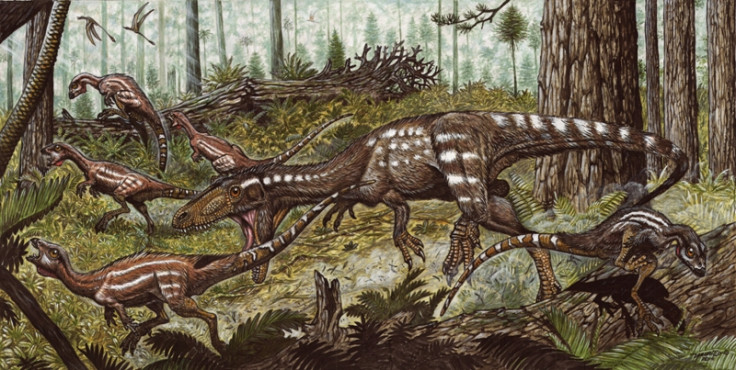Dinosaur Species Discovered: Tachiraptor Admirabilis was T-Rex's Tiny Ancestor from Venezuela

A new species of dinosaur has been discovered. Fossils from the 200 million-year-old Tachiraptor admirabilis were found in Tachira, Venezuela, just a few months ago.
It is an ancestor of Tyrannosaurus rex, but unlike that fearsome predator, it was just 1.5m from nose to tail (T-rex was up to 12.3m long).
Researchers believe the new predatory species, part of the theropod family, evolved just after a mass extinction event that took place 201 million years ago.
Published in the journal Royal Society Open Science, the fossils were found in the northernmost extension of the Andes at the western border of Venezuela.
"It corresponds to one of the few dinosaurs ever recovered from northern South America, and the first carnivorous member of the group reported for Venezuela. Tachiraptor admirabilis was a relatively small animal, living about 200 million year ago," the authors said.
"This corresponds to the earliest Jurassic and helps to explain the radiation of the carnivorous dinosaurs after the end Triassic mass extinction, which probably includes diversification in a poorly sampled paleoequatorial belt."
Tachiraptor admirabilis was an ancestor of other predatory dinosaurs including Allosaurus and T-rex. It feasted on other smaller dinosaurs.

Max Langer, a vertebrate paleontologist at the University of São Paulo in Brazil, told LiveScience: "Laquintasaura may have been part of Tachiraptor's diet. Tachiraptor was probably a generalist predator that ate anything it could get, such as small dinosaurs and other vertebrates, such as lizards."
Researchers said the fossils helped fill a gap in evolutionary history, with the summer-wet equatorial belt likely playing a pivotal role in theropod evolution across the Triassic and Jurassic boundary.
According to Science magazine, the rocks found near the fossils provide more detail about the environment in which the dinosaurs lived. The region was a volcanically active rift valley where part of the ancient supercontinent Pangaea was splitting apart near Earth's equator. It was also shortly after a mass extinction event that saw the end of the Triassic period and start of the Jurassic period.
Thomas Holtz Jr, a vertebrate paleontologist at the University of Maryland who was not involved in the study, said: "These survivors of the Triassic-Jurassic mass extinction were the 'ground zero' for later theropod evolution."
"[The study shows] that important discoveries don't have to be of the biggest or the scariest [dinosaurs]."
© Copyright IBTimes 2025. All rights reserved.






















